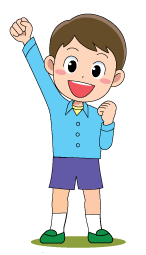April 2021 New: 3 Ways on How To Boost Children’s Brain Growth With Fun Activities

Activities like the abacus can be helpful in weighing out the disparities in the brain. Learn about how to boost your children's growth in school and at home.
I'm the author of this article and I'm a qualified abacus teacher, answering questions from around the world online abacus and various questions from online-soroban.com students.
Table of contents
.jpg)
Every child is unique.
A direct implication of that fact is that they learn and grow differently.
There exist different teaching methodologies which teachers employ to get their point across.
If your child is having trouble understanding some particular concept, a good way of ensuring that they get it is to switch the teaching methodology.
Even if the child does get it, it never hurts to look at a concept from different angles.
Doing that will only boost the child’s confidence in their understanding of the concepts and fill any knowledge gaps.
1-1.How To Boost Child Growth With Abacus Teachings

Abacus - the simple, mechanical, nonelectronic calculating device has been proven to contribute to children’s brain development to a great extent.
Let us discuss how the abacus can help in doing so.
We need to understand a bit about neural anatomy to fully grasp this concept.
The brain is divided into two large hemispheres, the left, and the right.
Both hemispheres handle very different functions of the body.
We will focus on thinking and thought-related functions here.
The left hemisphere of the brain handles the logic and reasoning capabilities of the person.
The fields of science and mathematics are much better suited to people who have a properly developed left hemisphere.
The right hemisphere on the other hand has more to do with artistic thinking, intuition, and creativity.
It is also responsible for emotions.
Most people tend to weigh the left hemisphere more than the right hemisphere.
That is a misconception for several reasons.
Let us talk about it in the context of mathematics.
Proper mathematics requires both - strong logical background and creativity to think out of the box.
Therefore children not only need their left hemispheres but also their right hemisphere developed as soon as possible.
This is where the abacus comes in.
Studies have shown that students who practiced the abacus regularly each day for a fixed amount of time, had a better developed right hemisphere.
The legacy classroom academics focuses heavily on the left hemisphere-based subjects which might leave the right hemispheres undeveloped or semi-developed.
1-2.Different Learning Methods and How To Boost Child's Academic Growth

As we started, different students think differently and hence they absorb information differently.
Therefore different students need different learning methods to fully grasp the concepts.
One single method will simply not work for everyone.
Here we will discuss some learning methods for the students which can be employed by teachers, parents, and guardians alike.
If one approach doesn’t work, consider changing the method or mixing two or more methods together.
The more perspectives the better. Visual Learning: This is the most common type.
Most children learn better when they see.
This could be an animated film or video.
It could be real pictures of things rather than diagrams.
Visual learning is often employed by schools.
Sites online can also be used to find helpful videos to show to the children.
Auditory Learning: This is a relatively less common type but still fairly easily seen.
In this type of learning method, the learners listen or hear the material.
This method often works better for the restless types who simply refuse to sit tight even for two minutes.
You can think of an audiobook-like experience.
Make sure there is some supplementary reading material to go along with the audio for best results.
Reading or Writing Learning: Many children learn fast when they are made to repeatedly write the text.
This method works with students who already have a good imagination.
Visually seeing something isn’t that important for them as they can imagine it.
These types also tend to be fast learners.
Learning by reading also goes in this category.
If your child can learn concepts just by reading, it is time now to start building a small library at home, a habit that will prove to be a knowledge mine.
Kinesthetic Learning: This is the last group of learning methods in modern learning theories.
Kinesthetic learning refers to learning by doing.
This includes conducting experiments, craft activities, making projects, and doing surveys while recording data preferably by hand.
This is also the type of learning used by most sports players and musical instrumentalists.
It is often considered to be the least academic type.
1-3. Benefits of Abacus and How To Boost Child Overall Growth

Abacus has many benefits let us take a look at some of them:
- It improves the sense of numbers.
It also makes the learner more confident when dealing with numbers.
People who use the abacus regularly are able to do the calculations in their heads without any errors.
- It improves dexterity. Unlike modern apps, an abacus is a real tool.
It requires touching things, moving them around, etc.
This provides the learners with a kind of haptic feedback.
It also improves their use of fingers and hands.
- Children who spend time with the abacus daily also see improved visualization.
They gain the ability to think spatially better and they also are able to imagine complex ideas in their heads much more easily.
- Boost in the confidence level and self-esteem are also seen.
Children tend to project confidence levels onto their entire personality.
Having a good level of confidence will help the child succeed in life and face challenges head-on.
Abacus can do that for your child.
Overall
We have learned that different children think, learn and grow in different ways.
Therefore different teaching methods should be used for different types of learners.
No single way will work for everyone.
The abacus can really improve the mathematical sense of the children and also adds to their confidence.
Every child should consider learning at least a bit of abacus.
| Tweet |










